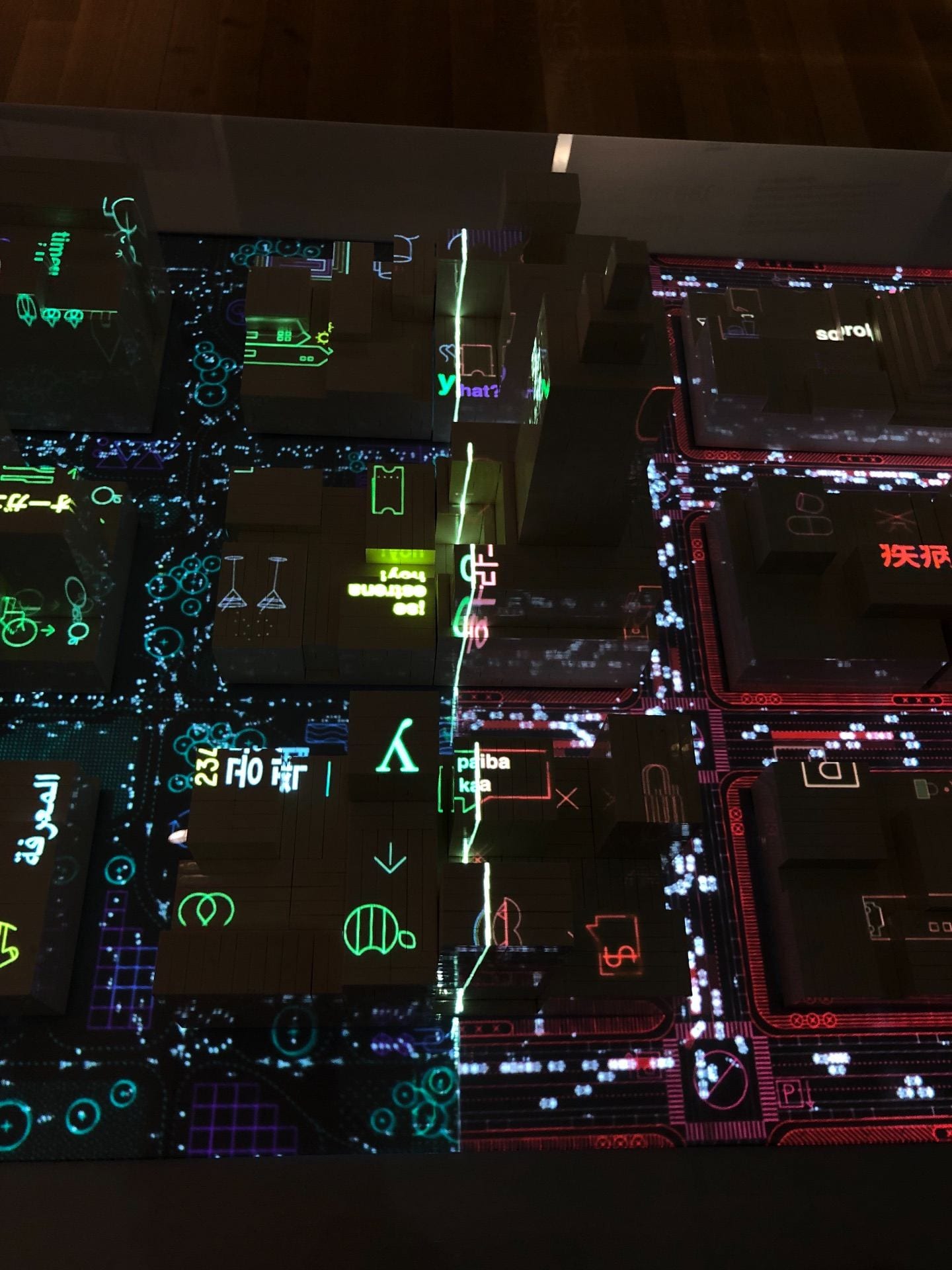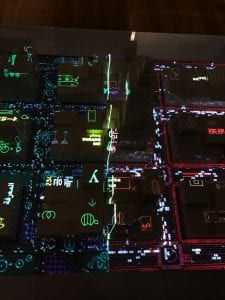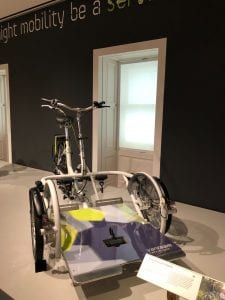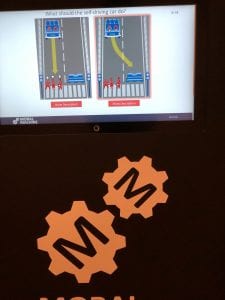CityScope
Designed by the City Science Group and MIT Media Lab, CityScope uses a series of interactive blocks to mimic that of a city, with mirrored projections highlighting two extreme futures regarding self-driving cars. The deeper red projection highlights an anxious, machinery-heavy/infiltrated city, whereas the cooler tones capture a more lively, human-centered city. Frankly, the overall aesthetic and presentation of this work immediately caught my eye. The beautiful iconography, distinct + complimentary color choices, and the interactivity within the work instantly sparked my creativity and mind in this projected world. The moving images and the ability of the piece to capture alternative realities in a clear, recognizable way through the strong imagery and iconography used throughout the piece really made the work stand out both in the collection and in the overall museum. My love for Illustrator/graphics has recently been seeking to explore the animated and interactive world, so looking ahead, I see this work as a great inspiration for collaborating my love for social justice and humanitarian causes with impactful graphics to inform and improve the lives of others in a beautifully designed way. I’m unsure what technology was exactly used for the work, but I do think that Processing, Adobe After Effects, and Adobe Illustrator are and would be great starting and collaborating points in this project and for myself to consider down the road. Regarding my long-term research project, I want to create a work displaying an augmented reality of our future that lies ahead based on the actions and practices by society today, so I think this work can serve as a great example as to the parameters and guidelines of the message and its delivery. In terms of the chindogu project, I think CityScope is a powerful example of how a clean delivery and presentation can affect the overall vibe and aura of the work. I believe if I am able to set up my chindogu in a fun, easy to use- yet engaging and curious manner, I would be able to spark the same creativity and initiative as CityScope gave me.
Velopus Wheelchair Transport
Designed by Van Raam, the Velopus Wheelchair Transport gives mobility-limited people a chance to further explore non-ADA accommodated spaces by acting both as a ramp and carrier for the wheelchair. The overall idea and the work’s foundation of its principles- to better serve an underrepresented part of the community, is a moral I value in my design work, and thus made me really connect to the work. Having multiple family members and friends who use wheelchairs, the limitations within various parts of the world are ridiculous. Let alone, any disability, its counter for accessibility when at parks or other areas is baffling as to how constrained and tied down you are. Having been on a feeding tube for 2(ish) months before coming to college, I understand the constraints and the mobility issues when traveling with a pump or places that have access to outlets to run the pump, not being able to easily and swiftly move in and out. Taking my own personal experience and the innovation/creativity behind this transport, I believe the simplicity and usability of the work is something that could universally be applied to my designs, especially the chindogu. Raam’s design raises the question as to how we can design seamlessly, as the work’s distinct aesthetic makes users not feel out-of-the-ordinary, rather already adaptable to what society looks and functions like. I believe the work’s ability to only be constructed of what it needs to operate is genius and will be a guiding point for all projects I work on. Again, being a part of an under-represented medical community and being an activist to promote awareness/equality for those within the ADA and other communities, Raam’s creation is truly a reminder and goal of how I want my work to impact others and better society and our lives within it.
The Moral Machine
The Moral Machine, created by the MIT Media Lab, the generator allows users to make controversial, subjective moral decisions. One must decide the fate of pedestrian-passenger fatalities in self-driving cars, choosing the lesser of two evils with unavoidable deaths. The overall concept of this work was both jarring and clever to me, as I am quite curious by these scenarios, but also how my thought process compares to others. The overall aesthetic and user-interface of the machine are easy to use and almost adaptable, with no major issues or confusion as to what I was asked. The interaction and overall connection the work created between the individual and society at large is a bond I want to recreate for my long-term research project, as I want to bring awareness to overarching societal issues and our individual perspective. Regarding my chindogu presentation for next week, I think this Moral Machine is a great example of how to present an idea clearly and effectively without overstating the idea. The minimalist design and the interface containing only what it needs to function makes the simplicity of the work stand out and allows the emphasis to be placed on the decisions, ultimately putting more attention towards the product’s goal- making tough moral decisions.



